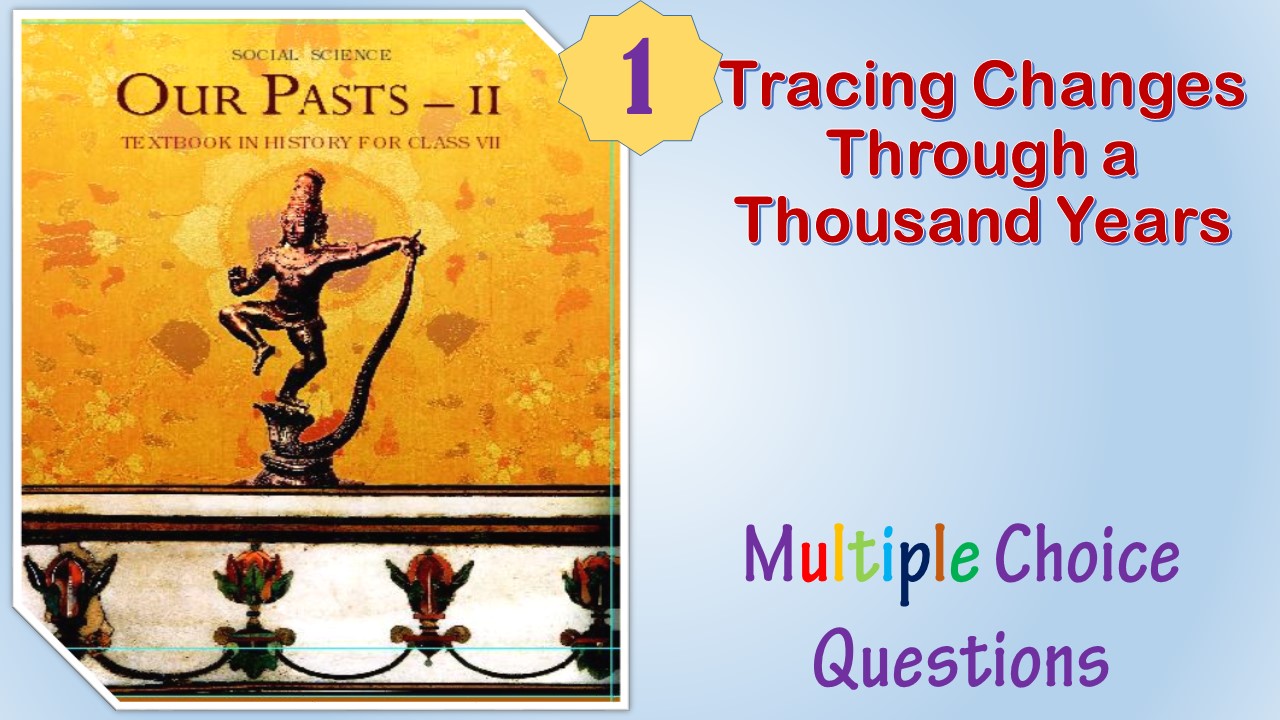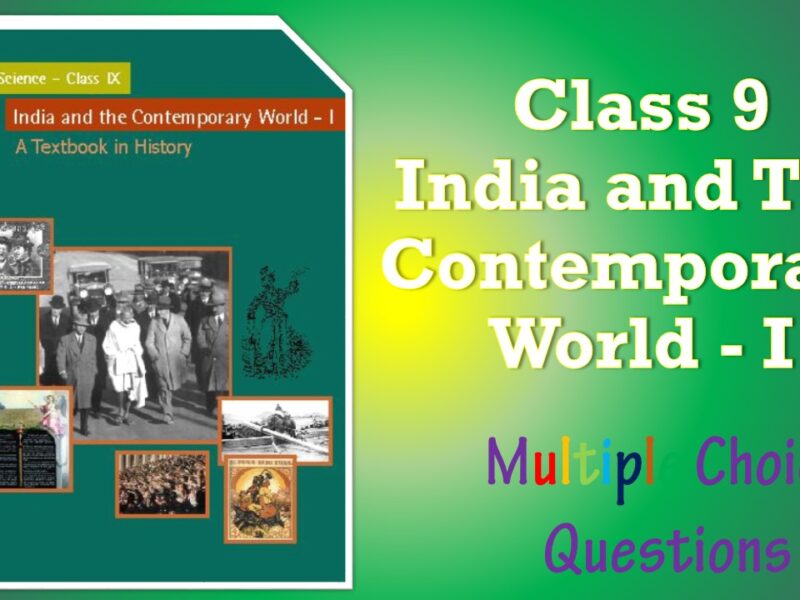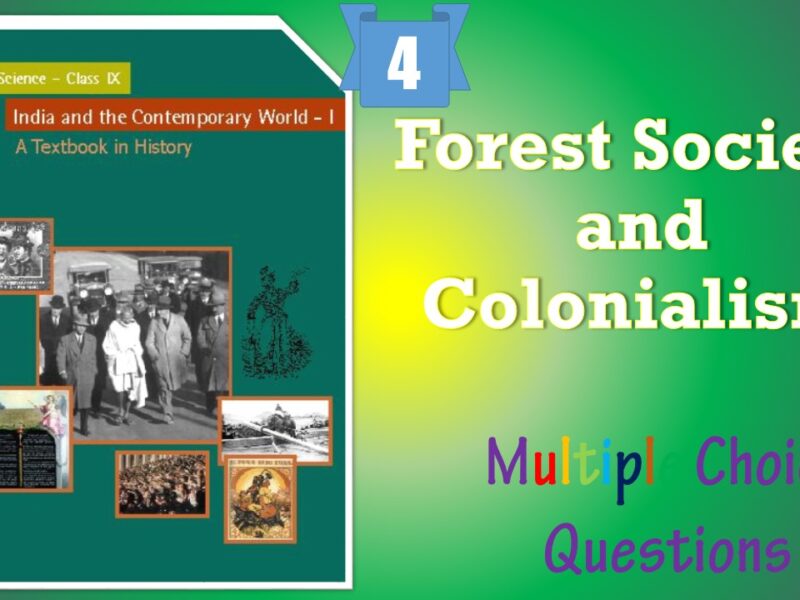Class 7 Social Science History MCQ Tracing Changes Through a Thousand Years with Answers is Prepared Based on Latest Exam Pattern. Students can solve NCERT Class 7 Social Science History MCQ Tracing Changes Through a Thousand Years with Answers to know their preparation level.
Students who are searching for NCERT Class 7 Social Science History MCQ Tracing Changes Through a Thousand Years with Answers are compiled here to get good practice on all fundamentals. Know your preparation level on MCQ Questions for Class 7 Social Science History MCQ Tracing Changes Through a Thousand Years with Answers. You can also verify your answers from the provided Class 7 Social Science History MCQ Tracing Changes Through a Thousand Years with Answers. So, ace up your preparation with MCQ of Class 7 Social Science Geography MCQ & NCERT Textbook solutions Examinations.
CBSE Class 7 Social Science History MCQ
Tracing Changes Through a Thousand Years
with Answers
Question :The land to the East of Indus came to be called the Hindustan by the
(A) Greeks
(B) Persians
(C) Arabs
(D) Both b & c
Answer : DShow Answer :
Question. Urdu is a mixture of
(A) hindi and arabic
(B) persian, hindi and arabic
(C) arabic and sanskrit
(D) none of these
Answer : BShow Answer :
Question :We come to know about Muhammad Tughluq from the account written by
(A) Abdul Razzaq
(B) Al Beruni
(C) lbn Battutah
(D) Marco Polo.
Answer : CShow Answer :
Question :Which Veda has the reference of a name of a king named Bharat ?
(A) Rigveda
(B) Yajurveda
(C) Samaveda
(D) Atharvaveda
Answer : AShow Answer :
Question :Ain-i-Akbari was written by :
(A) Chandbardai
(B) Abul Fazal
(C) Minhaj-i-Siraj
(D) None of these
Answer : BShow Answer :
Question :Indian history of the medieval times began from
(A) 6th century AD
(B) 7th century AD
(C) 10th century AD
(D) 8th century AD
Answer : DShow Answer :
Question :The Arabs called India by this name
(A) Hind
(B) Sindh
(C) Bharat
(D) Inde
Answer : BShow Answer :
Question :Tahqiq-i-Hind was written by
(A) Kalhan
(B) Alberuni
(C) Firdausi
(D) Masum
Answer : BShow Answer :
Question :Ain-i-Akbari gives us an insight of
(A) Babar’s administration
(B) Humayun’s administration
(C) Akbar’s administration
(D) Jahangir’s administration
Answer : CShow Answer :
Question :The court language of the Mughals was
(A) Hindi
(B) Sanskrit
(C) Persian
(D) Urdu
Answer : CShow Answer :
Question : The word ‘Rajput’ was derived from:
(A) Rajaputra
(B) Rajasthan
(C) Rajya
Answer : (a) RajaputraShow Answer :
Question : Who claimed Kshatriya caste?
(A) Group of students
(B) Group of warriors
(C) Group of priests
Answer : (b) Group of warriorsShow Answer :
Question : What do you mean by ‘archives’?
(A) Place where manuscripts were collected
(B) Place where diamonds were collected
(C) Place where toys were collected
(D) None of these
Answer : (a) Place where manuscripts were collectedShow Answer :
Archives were the places where manuscripts and documents were kept or collected.
Question : Who was Al-Idrisi?
(A) Cartographer
(B) Choreographer
(C) Both a and b
(D) None of these
Answer : (a) CartographerShow Answer :
Al-idrisi was an Arab cartographer.
Question : Manuscripts were placed in:
(A) Temples
(B) school
(C) Libraries and Archives
Answer : (c) Libraries and ArchivesShow Answer :
Question : Al-Idrisi was an:
(A) Cartographer
(B) Writer
(C) Doctor
Answer : (a) CartographerShow Answer :
Question : …………… draws the map.
(A) Engineer
(B) Artist
(C) Cartographer
Answer : (c) CartographerShow Answer :
Question : Who used the term ‘Hind’?
(A) Al-Idrisi
(B) Vasco da gama
(C) Minhaj-i Siraj
Answer : (c) Minhaj-i SirajShow Answer :
Question : In which period the number and variety of textual records increased dramatically?
(A) 600 to 700 CE
(B) 700 to 800 CE
(C) 800 to 1000 CE
(D) 700 to 1750 CE
Answer : (d) 700 to 1750 CEShow Answer :
Through the thousand years between 700 and 1750 the character of the different regions did not grow in isolation. These regions felt the impact of larger pan-regional forces of integration.
Question : When did the medieval period began in India?
(A) 9th century AD
(B) 8th century AD
(C) 10th century AD
(D) 18th century AD
Answer : (b) 8th century ADShow Answer :
The medieval period began in India in 8th century AD.
Question : Who used to copy down the scripts?
(A) Scribes
(B) Archaeologist
(C) Cartographer
Answer : (a) ScribesShow Answer :
Question : Which was the most dominant group in the society?
(A) Kshatriyas
(B) Traders
(C) Brahmans
(D) Muslims
Answer : (c) BrahmansShow Answer :
These included the worship of new deities, the construction of temples by royalty and the growing importance of Brahmans, the priests, as dominant groups in society.
Question : Ziyauddin Barani was a chronicles of which century?
(A) 18th century
(B) 19th century
(C) 14th century
(D) 15th century
Answer : (c) 14th centuryShow Answer :
The fourteenth-century chronicler Ziyauddin Barani wrote his chronicle first in 1356 and another version two years later.
Question : What does script refers to?
(A) Written form of language
(B) Spoken form of language
(C) Both (a) and (b)
(D) None of these
Answer : (a) Written form of languageShow Answer :
Script refers to written form of language. Manuscripts were collected by wealthy people, rulers, monasteries and temples. They were placed in libraries and archives.
Question : In which periods the British historian divided the history of India?
(A) Hindu
(B) Muslims
(C) British
(D) All of the above
Answer : (d) All of the aboveShow Answer :
British historian divided the history of India in the following three periods-Hindu, Muslim and British.
Question : Why were only Brahmans dominated in the society during the medieval period?
(A) They were only class to proficient in Sanskrit language
(B) They were only class to proficient in British language
(C) They were only class to proficient in Hindi language
(D) None of these
Answer : (a) They were only class to proficient in Sanskrit languageShow Answer :
Brahmans were dominated in the society because they were the only class of people who were proficient in Sanskrit language.
Question : Which of the following is not the meaning of foreigner’ in the past?
(A) Stranger
(B) Pardesi
(C) Ajnabi
(D) Indigenous
Answer : (d) IndigenousShow Answer :
Question : What were the new crops and beverages that arrived in Indian sub-continent in the medieval period?
(A) Corn
(B) Coffee
(C) Both a and b
(D) None of these
Answer : (c) Both a and bShow Answer :
Corn, chillies, tea, coffee and potatoes.
Question : Cartographer is a person who makes:
(A) Cartoons
(B) Caricatures
(C) Maps
(D) None of these
Answer : (c) MapsShow Answer :
Question : In which period did the number and variety of textual records increase dramatically?
(A) 600 to 700
(B) 700 to 800
(C) 800 to 1000
(D) 700 to 1750
Answer : (d) 700 to 1750Show Answer :
Question : Which type of people collected Manuscripts?
(A) Poor people
(B) Wealthy people
(C) Local people
(D) None of these
Answer : (b) Wealthy peopleShow Answer :
Question : In which century Babur used Hindustan to describe geography of subcontinent?
(A) 17th century
(B) 18th century
(C) 16th century
(D) None of these
Answer : (c) 16th centuryShow Answer :
Question : Why do historians today have to be careful about the terms in the past?
(A) Because they do not know the meaning of terms
(B) Because the terms may have more than one meaning
(C) Because the terms meant different in the past
(D) None of the above
Answer : (c) Because the terms meant different in the pastShow Answer :
Question : Where were the manuscripts placed?
(A) At home
(B) In libraries
(C) In archives
(D) Both (b) and (c)
Answer : (d) Both (b) and (c)Show Answer :
Question : Ziyauddin Barani wrote his Chronicle first in
(A) 13th century
(B) 12th century
(C) 14th century
(D) 15th century
Answer : (c) 14th centuryShow Answer :
Question : In which centuries was the term ‘Kshatriya’ applied more generally to a group of warriors?
(A) Between the eighth and fourteenth centuries
(B) Between the nineteenth and twentieth centuries
(C) Between the fourteenth and fifteenth centuries
(D) None of the above
Answer : (a) Between the eighth and fourteenth centuriesShow Answer :
Question : Which language was spoken during 14th century in present Bengal region?
(A) Awadhi
(B) Gauri
(C) Telangani
(D) Lahori
Answer : (b) GauriShow Answer :
Question : Which is the holy book of Muslims?
(A) Gita
(B) Adi-Puran
(C) Quran
(D) Ramayana
Answer : (c) QuranShow Answer :
Question : Who had accepted the authority of the early Muslim leaders?
(A) Sunnis
(B) Shias
(C) Khalifas
(D) None of these
Answer : (a) SunnisShow Answer :
Question : Prosperity in the subcontinent attract trading companies of which region?
(A) European
(B) Australian
(C) Russian
(D) None of these
Answer : (a) EuropeanShow Answer :
Fill in the blanks with appropriate words.
Question : The Muslims had two divisions the ………… and the …………
Answer : Shias, SunnisShow Answer :
Question : ………… had controlled an empire from Bengal in the east to Ghazni in the west.
Answer : BalbanShow Answer :
Question : ………… provide a lot of information to the historians.
Answer : ManuscriptsShow Answer :
Question : Rules and regulations of jatis were enforced by …………
Answer : Jati PanchayatShow Answer :
Question : Knowledge of ………… earned Brahmanas a lot of respect.
Answer : SanskritShow Answer :
Question : A person who draws maps is called ……………. .
Answer : CartographerShow Answer :
Question : Al-Idrisi was a ……………. .
Answer : cartographerShow Answer :
Question : Islam’s holy book is ……………. .
Answer : QuranShow Answer :
Question : ……………. used term ‘Hind’.
Answer : Amir KhusrauShow Answer :
Question : Ziyauddin Barani wrote his first chronicle in ……………. .
Answer : 1356Show Answer :
Question : The name India came to English usage from the _____________ century onwards.
Answer : 17thShow Answer :
Question : Abdul Razzaq wrote about the_____________ Kingdom.
Answer : VijoyanagarShow Answer :
Question :In earlier times there were no _____________ maps.
Answer : Show Answer :
Question : Gauri was the language of ……………. state.
Answer : BengalShow Answer :
Question : Ghiyasuddin Balban was ……………. of Delhi.
Answer : SultanShow Answer :
Question : The knowledge of Sanskrit texts earned the ……………. a lot of respect in society.
Answer : BrahmanasShow Answer :
Question :Later Medieval period is from _____________ to _____________ century AD.
Answer : 13, 18Show Answer :
Question : Many rulers were ……………. of Islam.
Answer : PatronsShow Answer :
Question : Hindustan was used first by ……………. .
Answer : Minhaj-i-SirajShow Answer :
Question : Ali was son-in-law of ……………. .
Answer : Prophet MuhammadShow Answer :
Question :The region of Indian subcontinent extends from Afghanistan to _____________
Answer : MyanmarShow Answer :
State whether the given statements are true or false:
Question :Historians face lots of difficulties in reading the various sources.
Answer : TrueShow Answer :
Question :Saints and sufis preached harmony in the society
Answer : TrueShow Answer :
Question :Prithviraj Raso was written by Abul Fazal.
Answer : FalseShow Answer :
Question :In the later Medieval period of Indian history we study about Turks, Afghans and Mughals.
Answer : TrueShow Answer :
Question : The ‘h’ in Persian is similar to ‘i’ in Sanskrit.
Answer : FalseShow Answer :
Question : Science of cartography differed between 12th and 13th century.
Answer : TrueShow Answer :
Question : We have many original manuscripts to get information.
Answer : FalseShow Answer :
Question : Between 8th and 14th century the term Kshatriya was used for group of Brahmanas.
Answer : FalseShow Answer :
Question : Status of a jati remained same from region to region.
Answer : FalseShow Answer :
Question : Muslims had two schools of law hanafi and shafi’i.
Answer : TrueShow Answer :




